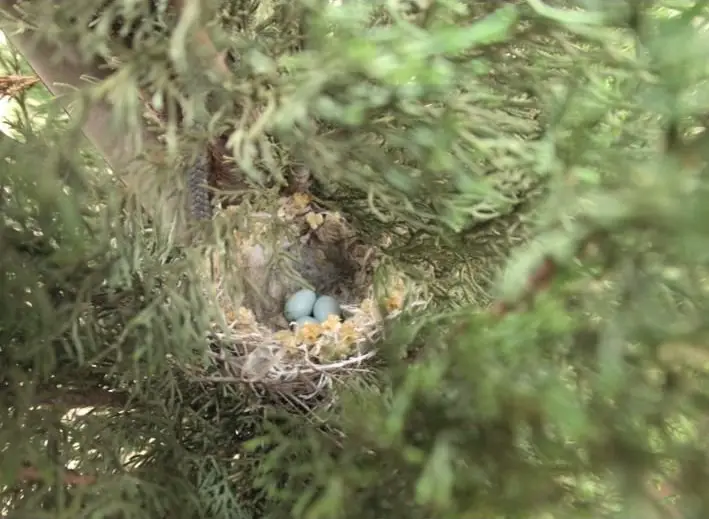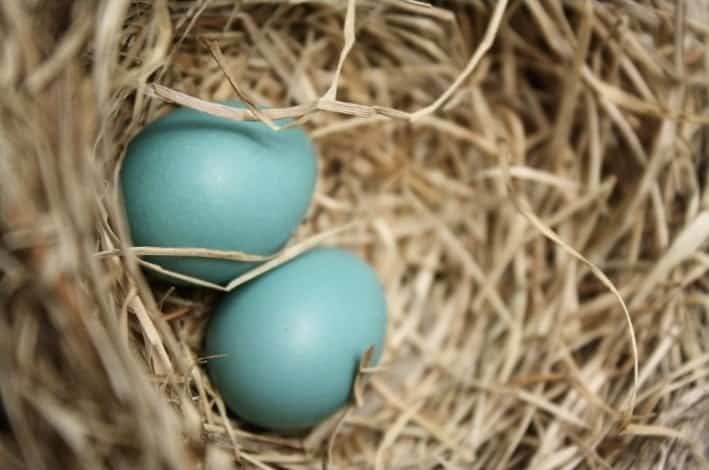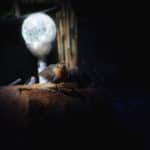The European robin is a migratory bird that can be found in various regions of Europe, North Africa, and Western Asia. Interestingly, the colouring of their eggs varies depending on the region they are from. In general, the eggs are a pale blue colour, but some may be lighter or darker. What is perhaps even more intriguing than the colouring of robin’s eggs is the fact that there is still much mystery surrounding why they are blue in the first place.
While it is speculated that the blue colour helps camouflage the eggs against predators, there hasn’t been any definitive proof to back this up.
Theories
There are several theories about why European robins lay blue eggs. One possibility is that the blue pigment helps to protect the eggs from being damaged by UV radiation. Another theory is that the blue colour camouflages the eggs from predators. However, there is no definitive proof of either of these theories. More research is needed to determine the true benefits, if any, of having blue eggs.
It is not known if the colour of the eggs affects the hatching success of the chick; it is speculated that it does. Robins are cavity nesters, meaning they lay their eggs in tree cavities, birdhouses, or other sheltered areas. In general, eggs that are laid in more exposed areas, like on the ground, are at a higher risk of being damaged or destroyed. The blue colour of robin eggs may help to protect them from being harmed.
Interestingly, while the blue pigment may help to protect the eggs from being damaged, it can also have negative effects on the chicks. If the blue pigment is present in large quantities in the egg, it can cause the chicks to be born with health problems.
In short, there is still much that scientists do not know about the blue pigment of robin eggs. However, the theories that have been proposed so far seem to make sense. It will be interesting to see what future research reveals about this intriguing topic.
What Causes the ‘Blue’ Colour?
For years, people have been wondering why a robin’s eggs are blue. Scientists have now discovered that the blue colour is caused by a pigment called biliverdin. This pigment is also responsible for the blue colour of bruises. Biliverdin is found in the eggshells of all birds that lay blue eggs, but the specific pigment that is responsible for the blue colour can vary from bird to bird.
For example, while European robins have biliverdin in their eggshells, North American Eastern Bluebirds do not. Their eggs are a light powder blue colour. The eggs of the American robin, which is a related species, are also blue, but they have a different pigment called oocyanin. Oocyanin is also responsible for the blue colour of the sky on a clear day. So, while the specific pigment that makes eggs blue may vary from bird to bird, the overall effect is always pretty similar.

Does the Blue Pigment of European Robins Help with Reproduction?
There is still some debate about whether or not blue pigment helps with reproduction. Some scientists believe that it does, while others believe that it doesn’t make a difference.
A study published in the journal “Biology Letters” suggests that the blue pigment of European Robins may help with reproduction. The study found that male robins with more blue pigment in their feathers were more likely to mate and have offspring than those with less blue pigment. The researchers believe that the blue pigment may help make the males look healthier to potential mates.
The study’s lead author, Dr. Christina Dickson, said, “This is the first time that anyone has shown a relationship between feather colour and reproductive success in a wild bird species. The results are really exciting because they suggest that the colour of a male’s feathers may be an important signal to females.”
The blue pigment of European Robins is not the only thing that helps with reproduction. The males also have a louder song than the females, which may help them attract mates.
However, some studies suggest that the blue pigment could hurt reproduction. More research is needed in this area to determine if there is a correlation between blue pigment and the reproduction process.
Different Colours
Robin eggs can come in a variety of colours, including blue, green, brown, and cream. These eggs usually have a brown or red tint on them. This is determined by the genes of the parents. If a robin has two blue genes, then the egg will be blue. If a robin has one blue gene and one brown gene, the egg is supposed to be brown. If a robin has two brown genes, then the egg will be brown.
The reason for this is still unknown, but it is thought that it could be due to a genetic mutation. There have also been cases where robins have laid eggs that are completely green or brown. Again, the reason for this is still unknown, but it is thought to be due to environmental factors, such as the bird’s diet.
Fun Facts About European Robins > one of the most common birds in Europe > can be found in almost every habitat, from open fields to dense forests > are territorial and aggressive towards other birds, especially during the breeding season > build their nests out of mud, grass, and leaves > are omnivorous and eat a variety of insects, fruits, and seeds > are relatively short-lived, living for only 2-3 years in the wild > are popular garden birds and are known for their beautiful song > are one of the few bird species that can see ultraviolet light. This allows them to distinguish different types of flowers and fruits by their UV markings > are also one of the few bird species that can learn to mimic human speech. Some people have even taught their pet robins to say phrases like “hello" and “I love you"















